Weather not only impacts our mood but our buying behavior too. Broadly speaking, weather affects our purchase methods and the choice of products. For example, this research study found that rainy weather positively impacted the users’ buying behavior, which means that e-commerce companies have the potential to sell more during the monsoon. Doing category affinity analysis and understanding affinity metrics can help brands to offer monsoon-tailored personalized recommendations for better selling opportunities.
But what is category affinity?
If you’re a regular shopper on Amazon, you have often noticed an “items bought together” or “customers who bought this item also bought this item” feature when buying a product. While this has been commonly referred to as product recommendations, it is also a classic example of eCommerce category affinity.
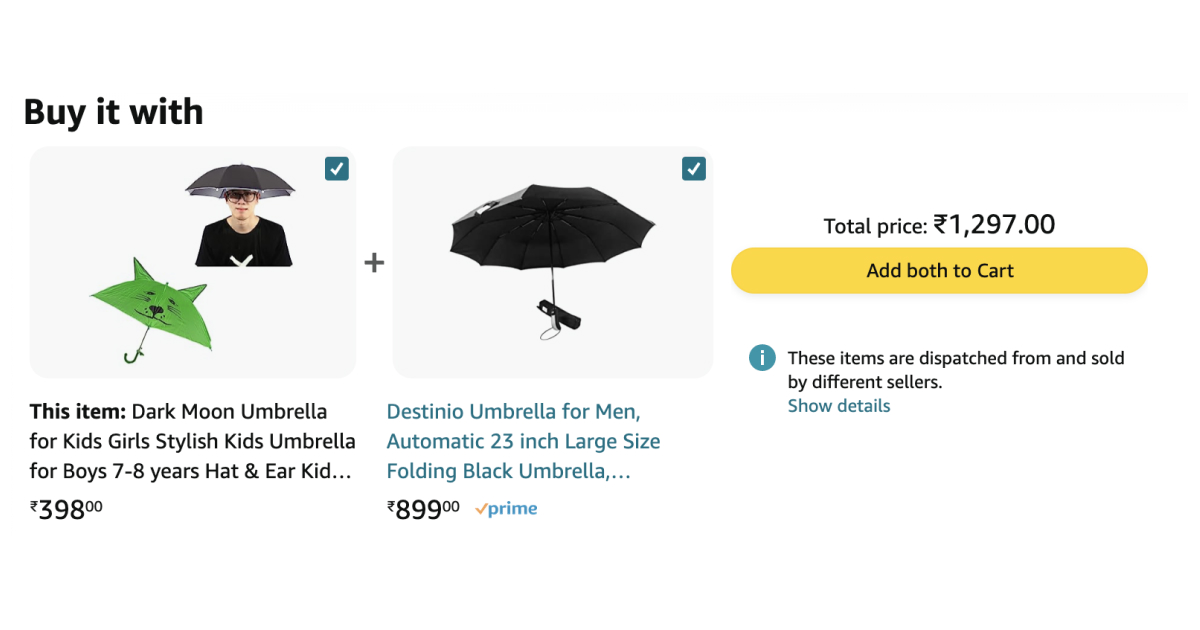

Analyzing users’ category affinity and looking for patterns is a great strategy to target and segment customers, bring in new buyers, establish trust, promote brand awareness, and finally cross-sell and upsell your products.
At the onset of the monsoon, we think diving into category affinity patterns can help you sell more to consumers shopping online as they spend more time indoors. Analyzing the customer’s buying behavior, you can group related products together and encourage the customers to buy them to suit their ‘monsoon’ needs.
If you’re new to the concept of eCommerce category affinity, it simply means finding ‘related to’ or ‘relevant to’ interests displayed by a consumer during a specific period of time. And these patterns can be noted through your online store data.
10 eCommerce category affinity patterns for monsoon

Let’s explain this with an example. Say you’re an eCommerce apparel store for men’s, women’s, and kids’ fashion. Here are a few category affinity ideas to explore:
1. Traffic to a category
Do you observe more traffic patterns to a particular category of products? For example, if you see a spike in traffic to a category product, say women’s rain poncho, there’s a higher chance that the customer may also be interested in exploring other products in the women’s category, say pants that can be paired up with a rain poncho. So, when you see a boost in traffic in a particular category of products, you may show similar products from the same category to the customer.
2. Engagement in a category
If you notice a certain customer is on a wishlist, adding products to carts, or subscribing to discount coupons for a particular product category, say monsoon wear for children, they’re likely engaged in this category of product. Showing them other products from the same category increases the chances of cross-selling your product.
3. Cost to drive traffic to a category
Creating personalized category pages based on user affinity and behavior can improve the user experience and increase the chances of conversion while lowering the cost to drive traffic to a category because the buyer already has a similar intent.. By presenting the most relevant products to each visitor, businesses can increase the chances of conversion, leading to lower costs in the long run.
4. No. of conversions/ sales in a category
If you’re noticing more conversions or sales in a particular category, say kids’ raincoats, you may want to show similar products like a raincoat combo for the family, a mother-daughter raincoat combo, or a father-son raincoat combo for improved conversions and sales in the category.
5. Cost to drive a sale
Retargeting/remarketing ads are typically the most cost-effective at driving sales because of their unique targeting method. The cost of retargeting/remarketing can vary depending on the platform used and the bidding strategy. Identifying category affinity and targeting customers at a granular level with hyper-targeted messages can lower the cost to drive a sale because the customer is already searching for the product and has a high intent to purchase.
To do this effectively, you need to understand the product affinity metrics that help to determine the purchasing behavior. It uses a conditional rule like:
IF (umbrella) THEN (raincoat, rain boots)
Understanding the product affinity metrics can help you create better product bundles that sell better and calculate the lift in sale value.
The lift is calculated by taking the total number of the transactions of an itemset and finding what percentage of that figure accounts for which elements in the affinity category.
6. Revenue generated per category
Which category is generating more revenue than other categories? Identifying those categories and pairing products of similar categories can help you fetch more revenue.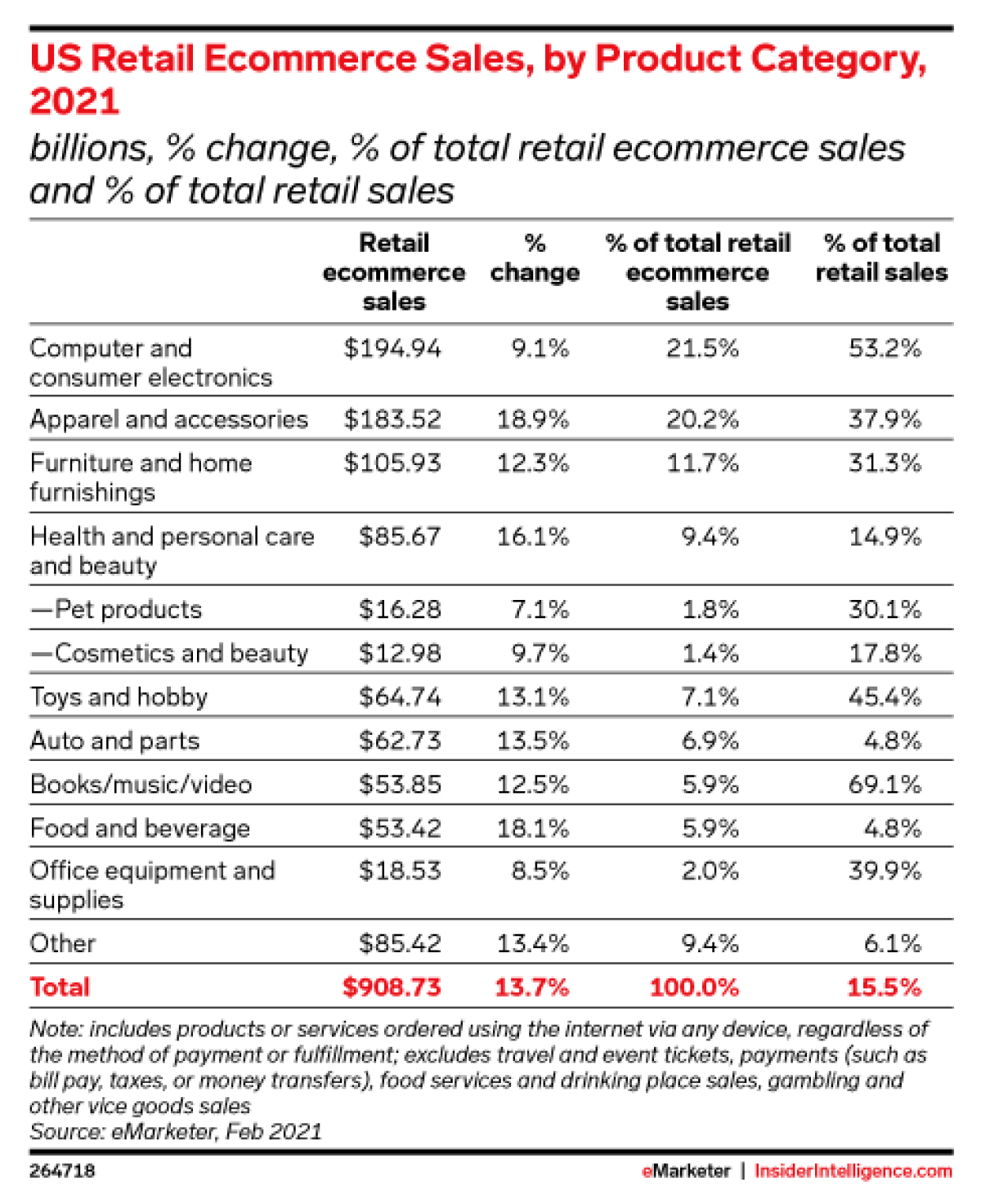
7. Customer service
Which category of products is getting more customer service requests, support requests, per category? Tap into your customer service team to find answers to these questions and create the right product recommendations for your customers.
8. Cart abandonment rate per category
Cart abandonment rate per category is an important metric for eCommerce businesses to monitor and optimize to improve the user experience and increase conversion rates. Cart abandonment rates can vary depending on the category, device, location, and customer behavior. Pairing the right products and offering lucrative discounts can help you reduce the cart abandonment rate per category.
9. Bounce rate per category
A high bounce rate for your eCommerce means that something is wrong. While an average eCommerce bounce rate is between 20% and 40%, a bounce rate lower than 20% is considered to be exceptional. By analyzing category affinity data, you can identify high-value customers and target them with personalized campaigns because these customers are likely to engage and buy from your site. This will minimize your bounce rate.
10. Time on site per category
Category affinity strongly influences how much time a customer will spend on your site. By analyzing category affinity data, businesses can identify high-affinity users who are more likely to engage with the website and spend more time on it. Businesses can increase on-site time and improve engagement by targeting these users with personalized content and offers.
How can brands use category affinity?
Now let’s look into what category affinity insights can help eCommerce businesses achieve during monsoons and other time of the year:
1. Better personalization of communication
When you know what your target audience is looking for, you can better craft your communication message. For example, you can directly speak to them if they’re looking for a monsoon outfit collection. Saying, “Pair your monsoon outfit with these rain boots to keep your feet dry,” can quickly get their attention.
For instance, our recommendation and catalog engine can be used for your monsoon marketing campaigns to bring personalization across all customer touchpoints. Whether it’s push notifications or text messages, the engine is able to leverage historical and real-time interaction data to ensure all promotions remain contextual.
2. Better targeting of ad campaigns
Since category helps you understand which products are more popular among your customers, you can target your ads at a granular level. This can significantly help reduce the CAC and increase conversions because you’re showing targeted product recommendations that your target audience has already shown an affinity towards.
3. Better recommendations
You can recommend similar products by calculating the buyer’s affinity for a particular category. This can be done based on the buyer’s style profiles. Style profile gives a peek into the buyers’ online behavior, like what products they’re viewing (for example, if they’re looking at umbrellas, they’re recommended various colors and options in umbrellas), the buyer’s transactional behavior (like what they have purchased and returned in the past) along with their demographics. Knowing all these details can help you present recommendations through website content, app content, or emails.
4. Product placement
Knowing which two products pair well and which products have a low affinity, you can recommend products to your customers to improve sales. This means that while an umbrella and a raincoat pair well, a sunglass and a raincoat might not pair well. So a customer with a strong affinity for monsoon products will likely buy a raincoat and umbrella combo rather than a sunglasses and a raincoat combo. By knowing customer data well, you can place your products strategically.
5. Product bundling
Analyze your customer’s purchasing behavior. What are the similar products they are buying? What combination of products can you pair up that can increase your customer lifetime value (CLV)? When you have repeat customers who are buying similar kinds of products over a period of time, you can create a product bundle for them and tie it with a small discount. This can help you sell more and bring in customer loyalty too.
Conclusion
Leveraging category affinity patterns can be a game-changer for your business, not just for a seasonal marketing campaign but driving overall sales and engagement to your business.
However, you need to dive deep into data to get a comprehensive view of your marketing campaigns, how they lead people to the site, and where and how it impacts your bottom line.
A platform like Webengage can give you a holistic view and help you make informed decisions based on how consumers are interacting with your campaigns and which of them are leading to actual sales. Its powerful recommendations and catalog engine can further help you personalize monsoon campaigns at scale across channels, bringing seasonality into your messages alongside previously recorded consumer behavior – a mix that is sure to get you better engagement and conversions on campaigns.
Want to know more about using category affinity patterns and how the recommendation and catalog engine can boost your monsoon sales?





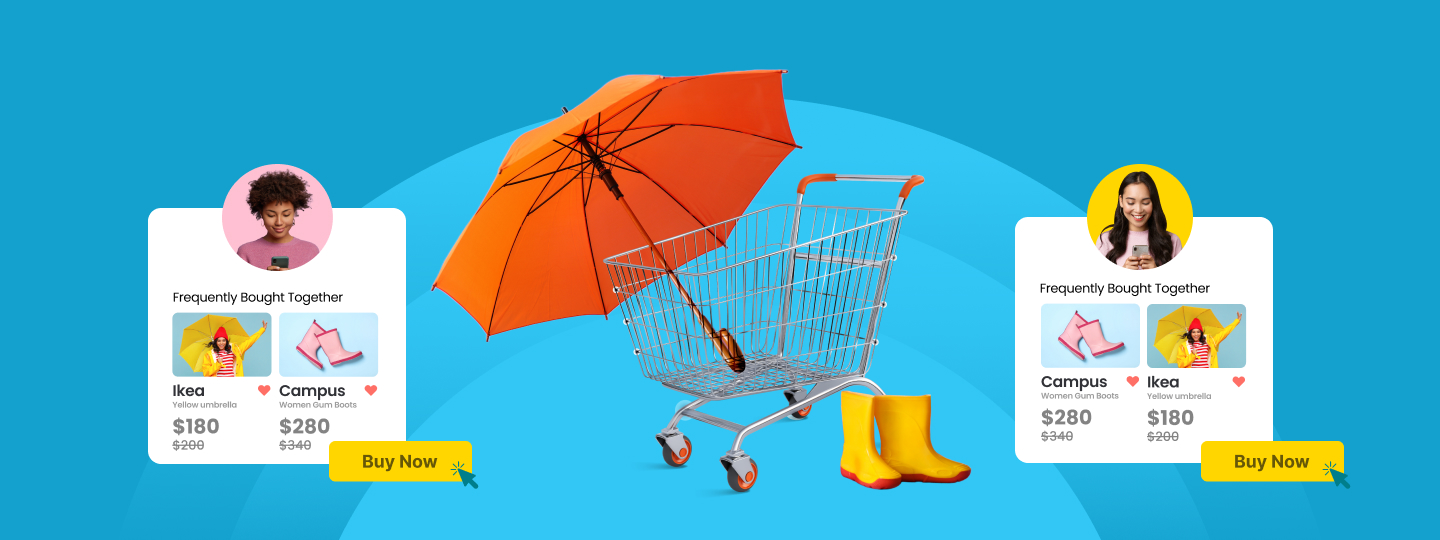

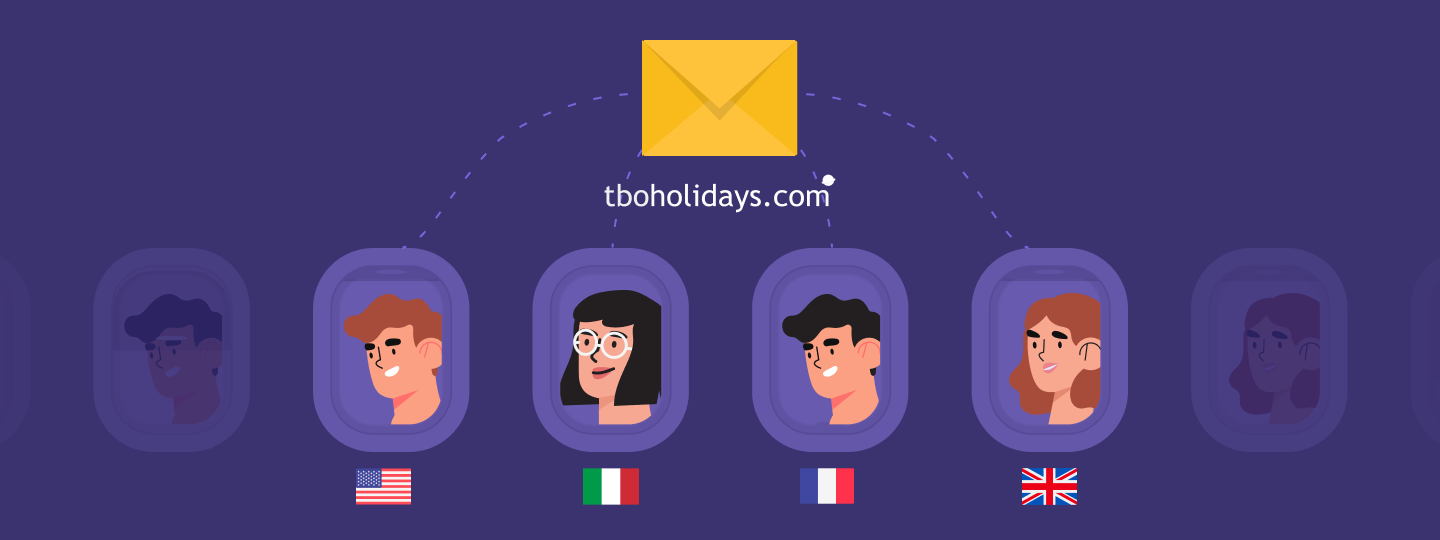
 Dev Iyer
Dev Iyer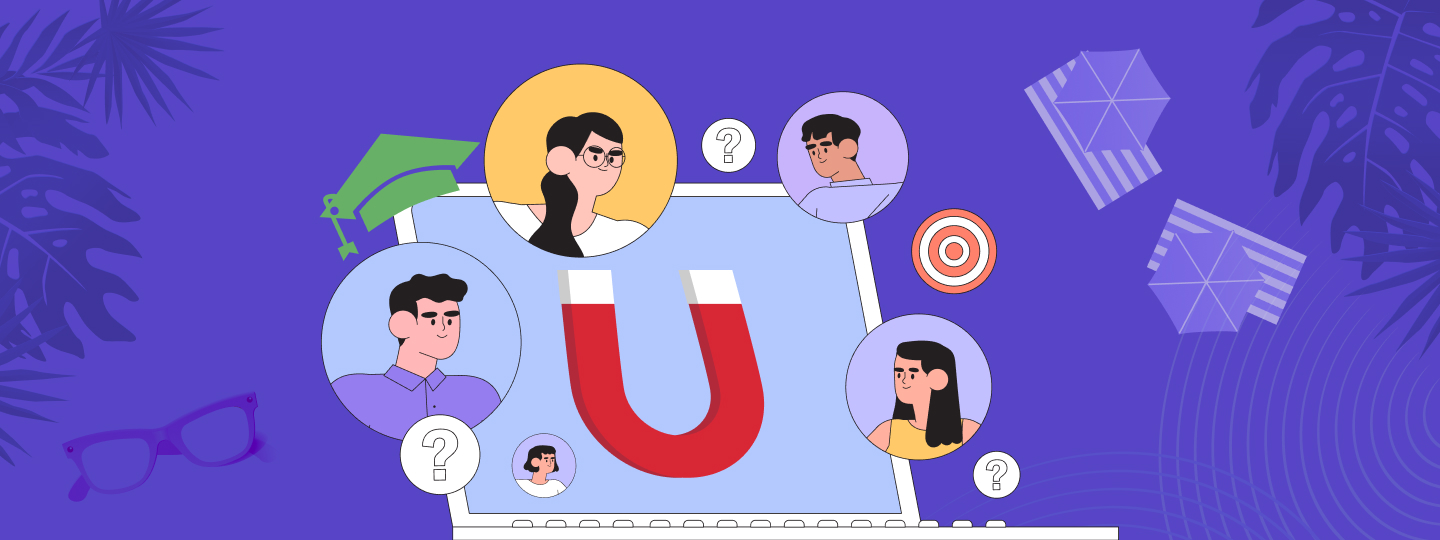
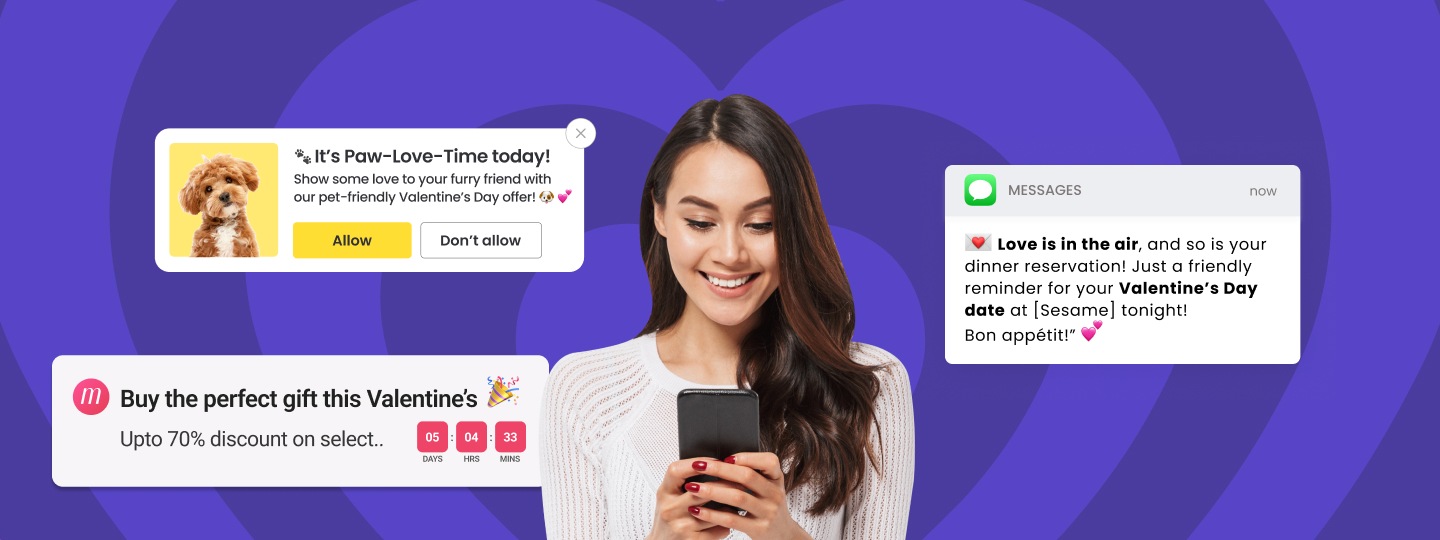
 Diksha Dwivedi
Diksha Dwivedi